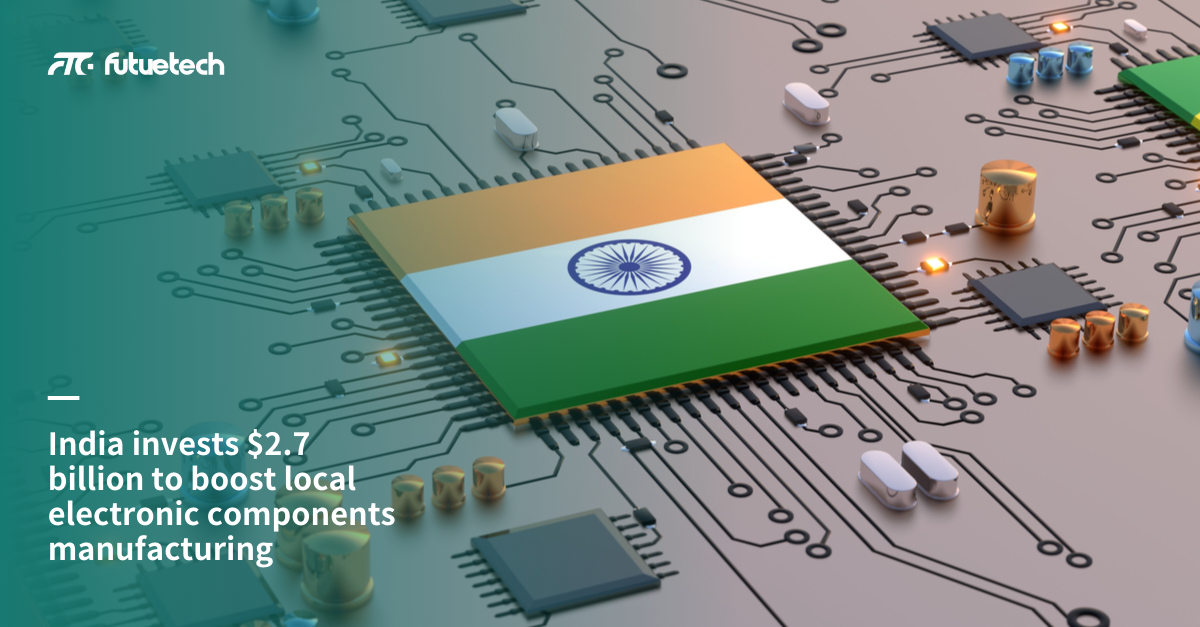April 27, 2025 — In a significant boost to India's ambitions of becoming a global electronics manufacturing hub, Dixon Technologies and Tata Electronics have announced major investments under the newly launched Electronics Component Manufacturing Scheme (ECMS). This initiative, with a total outlay of ₹22,919 crore, is a cornerstone of India's strategy to deepen its electronics value chain beyond final assembly into critical sub-assemblies and core components.
Major Announcements
Dixon Technologies Embarks on Captive Component Manufacturing
Dixon Technologies, one of India's leading electronics manufacturing services (EMS) providers, confirmed its entry into captive component production. According to CEO Atul Lal, the company will initially focus on manufacturing display modules, camera modules, mechanical enclosures, and lithium-ion batteries. These products will first serve Dixon’s internal requirements before the company expands to supply external customers and export markets. Lal emphasized that this move will allow Dixon to improve control over its supply chain, enhance product quality, and better manage costs, aligning with global standards.
Tata Electronics Plans ₹2,000 Crore Investment
Separately, sources have reported that Tata Electronics plans to invest ₹2,000 crore to establish new fabrication facilities dedicated to electronic components. These facilities aim to integrate Indian-made parts into global supply chains, marking a strategic pivot from traditional electronics assembly to core component manufacturing. Tata Electronics’ entry reflects its broader vision of participating in the entire electronics value chain, from semiconductor packaging to subsystem development.
About the Electronics Component Manufacturing Scheme (ECMS)
The ECMS, approved by the Union Cabinet earlier this month, provides financial incentives across key electronics component categories—including display assemblies, camera modules, bare PCBs, Li-ion battery cells, mechanical parts, and associated capital equipment.
Key highlights include:
● Total budget: ₹22,919 crore
● Duration: Six years (FY26 to FY32)
● Expected investment attraction: ₹59,350 crore
● Expected production: ₹4,56,500 crore worth of electronic components
● Employment generation: Around 91,600 direct jobs
The incentives are structured to reward both capital expenditure and turnover growth, with an added focus on creating a sustainable local supply chain for the electronics industry.
Broader Industry Implications
The announcements by Dixon Technologies and Tata Electronics signal a turning point for India's electronics sector—one that is moving rapidly upstream in the global value chain.
● Strategic Value-Chain Deepening: For decades, India’s electronics sector was largely assembly-driven, heavily reliant on imported components. Captive component manufacturing will allow Indian companies to internalize key technologies, reduce import dependency, and improve margins. This move also strengthens resilience against external supply-chain disruptions, a lesson reinforced by recent global semiconductor shortages.
● Acceleration of Local Ecosystems: Large investments in component fabrication are expected to catalyze the development of ancillary industries—including materials, equipment suppliers, clean-room service providers, and component design firms. This will create a robust ecosystem that can support a wide variety of products, from smartphones and electric vehicles to industrial automation and defense electronics.
● Enhancing Global Competitiveness: With cost-effective, high-quality domestically produced components, Indian manufacturers will be better positioned to serve not just the domestic market but also emerging and mature export markets. Indian companies could potentially become critical suppliers to global OEMs and Tier-1 system integrators, increasing India's share in global electronics exports.
● Innovation and Technological Advancement: Moving upstream into component manufacturing fosters greater emphasis on process innovation, IP generation, and advanced manufacturing technologies like precision fabrication, materials science, and nano-scale assembly. Companies investing early will likely become leaders in proprietary technologies, enhancing India's technological sovereignty.
● Employment and Skill Development: With a focus on skilled manufacturing—such as cleanroom operations, precision assembly, and testing—the industry will generate high-value employment opportunities. The government’s emphasis on linking incentives to job creation will encourage companies to invest in large-scale upskilling programs for engineers and technicians.
● Attracting Global Partnerships: India’s improving manufacturing infrastructure and government-backed schemes are increasingly attractive to international companies seeking to diversify their supply chains away from over-concentrated regions. Early domestic investment by leaders like Dixon and Tata could pave the way for joint ventures, technology transfers, and new R&D collaborations with global giants.
Conclusion
The ECMS is poised to reshape the future of India’s electronics industry. Early commitments by Dixon Technologies and Tata Electronics are not just investments in facilities—they represent a strategic realignment of India’s role in the global electronics landscape. As domestic capabilities scale up and ecosystems mature, India is on track to transition from a major consumer of electronics to a leading global producer of critical electronic components.

